![Congestion in the Greece high-pressure gas pipeline [maps]](https://www.ot.gr/wp-content/uploads/2023/02/gas-tap-with-pipeline-system-at-natural-gas-statio-QKJS6NP-1024x768-1.jpg)
The need to increase the natural gas transmission capacity of the country’s main pipeline is pointed out by the Hellenic Natural Gas Transmission System Operator (DESFA).
In the ten-year development plan for the period 2023-2032 that DESFA put out for public consultation, it is emphasized that the existing high-pressure pipeline system cannot accomodate more gas.
And especially with the planned development of the four new floating LNG storage and gasification units the gas import capacity can be significantly increased further. These are the FSRUs in Alexandroupoli, Volos, Corinth and Thessaloniki.
In essence, the Administrator proposes as a solution the construction of a pipeline parallel to the existing one that starts from Komotini and ends at Patima Korinthos.
Congestion
DESFA describes the problematic points of the National Natural Gas System (NNGS).
“Internal bottlenecks in the Greek NNGS limit the import potential from existing and future entry points”, notes the Administrator and more specifically: “For example, TAP’s import potential in Greece is limited to almost 1.5 bcma, (out of of which 0.5bcma is currently exported to Bulgaria), i.e. less than half of the full import potential from TAP to the Greek NNGS”
And the second problematic point is:
“The small diameter of the Karperi-Komotini pipeline limits to zero the uninterrupted export capacity from the Greek NNGS to IGB, as the available technical capacity has already been assigned and committed by existing consumers.”
A small respite will be given with the ongoing construction of the new compressor station in Komotini which “will allow IGB to receive LNG from the new FSRU in Alexandroupoli, up to IGB’s full capacity (5 bcma), but without expanding the pipeline capacity.” Karperis-Komotinis, this capacity will not be available to any other DESFA User”, describes DESFA.
Investments
According to DESFA, additional investments are required in the Greek natural gas system:
These investments will increase the capacity of the Greek natural gas system to transport quantities of natural gas (mainly LNG) from Greek territory to the northern neighboring countries and Italy and will allow the exploitation of interest in transit flows through Greece, which the natural gas market expresses itself today in several ways.
The Administrator proposes the construction of new projects:
Karperi – Komotini pipeline
The first is the “Doubling of the Karperi-Komotini high-pressure branch” (290 million euros).
This is a project that aims to provide uninterrupted capacity from the Virtual Transaction Point (VTP) to all Exit Points of the specific branch and from all Northeast Entry Points to all Exit Points of the branch.
The proposed project involves the construction of a 30-inch, 215-kilometer, 100% hydrogen-compatible pipeline parallel to the existing network from Karperi to Komotini.
The design of the said project was based on the goal of enabling firm capacity of up to 3bcma in the ESF for export to the IGB, the maximum capacity of which reaches 5bcma, also utilizing the operation of the compression station in Komotini, as well as for additional domestic consumption and supply.
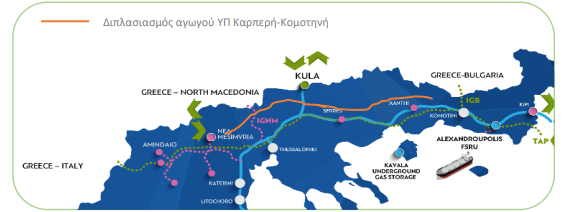
Map of the Karperi – Komotini project
Patima – Livadia pipeline
The second project is the “Doubling of the Patima – Livadia high pressure branch” (€140 million) which is mainly aimed at providing uninterrupted capacity to the users of the Floating Storage and Gasification Unit (FSRU) of the Gas Canal and will therefore be implemented subject to the Final Investment Decision of the Gas Pipeline.
The project includes the doubling of approximately 100 kilometers of the main High Pressure pipeline of the NNGS with a 100% compatible hydrogen pipeline, 30 inches in diameter, from Megara to Livadia, as shown in the map below.
The aim of the project is to reduce the pressure drop in the main pipeline, when the natural gas flow is from South to North, by increasing the pressure level on the upstream side of the Ampelia Compressor.
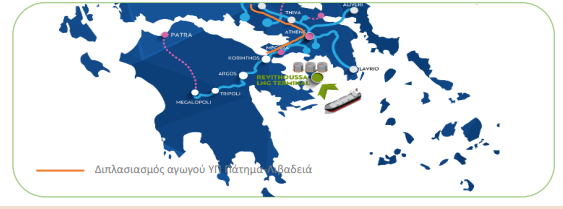
Map of the Patima – Livadia project
Livadia – Karperi pipeline
The third project proposed by the Administrator is the doubling of the Livadia – Karperi high pressure branch with the construction of the necessary compressors at the same time.
The project consists of the following sub-projects:
• Karperi-Liivadia High Pressure Branch (340 km, 30 in. pipeline)
• Upgrading of the planned Compressor in Abelia (adding power up to 12 MW)
• Compressor Upgrade in N. Mesimvria (power addition up to 21 MW)
• New Compressor in the eastern branch (estimated power up to 18MW)
The project can be implemented on a fully scalable, modular and phased basis for further evaluation after the result of the market test, which DESFA will start in February 2023, to evaluate new capacity requests.
And, in this context, this particular project could also act as a facilitator for further requests for capacity commitments at the Interconnection Points between the Greek ESFA and neighboring systems, i.e. TAP, IGB or neighboring countries. For this purpose, the project specifications will be finalized after the completion of the market test, which is expected in early 2024.
The main objective of the project is to eliminate all the bottlenecks of the existing system by providing uninterrupted access to the Greek Natural Gas System, the interconnected networks and the neighboring countries.
The potential maximum increase in the capacity of the NNGS by sector, after the implementation of the project, is presented in the following table. As already mentioned, the pipelines of the project will also be built as 100% hydrogen compatible.
Therefore, this project will serve in the future as part of the expected European hydrogen “backbone”.
The ten-year development plan
In total, the new Draft Development Program 2023-2032 includes projects with a projected budget of 1.27 billion euros, of which the amount of 458 million euros corresponds to new projects, while the rest correspond to those already approved in the PA 2022 – 2031, updated on schedule and budget.
Of these new projects, 13 million euros correspond to improvements, modernization and maintenance of the NNGS, while 430 million euros correspond to new projects that create new capacity in the system.
Latest News

Pope Francis: A Pontiff Who Reshaped the Papacy and Sparked a Global Conversation
His first words from the balcony of St. Peter’s Basilica—“Brothers and sisters, good evening”—set the tone for a pontificate that would challenge norms, favor mercy over dogma, and bring the papacy closer to the people.

When Blue Skies was Unmasked as ND’s Political ‘Slush Fund’
The fact that so many top New Democracy (ND) party cadres were paid by the firm Blue Skies, owned by Thomas Varvitsiotis and Yiannis Olympios, without ever citing this publicly, raises very serious moral issues, regardless of the legality

Greek Women’s Water Polo Team Top in the World after 13-9 Win Over Hungary
The Greek team had previously defeated another tournament favorite, the Netherlands, to reach the final.

S&P Raises Greek Rating; BBB with Stable Outlook
S&P’s decision raises the Greek economy to the second notch of investment grade ladder, at BBB with a stable outlook.

Greek Tourism Optimistic About Demand from American Market
A recent survey by MMGY Global, conducted from April 3–5 with a sample of 1,000 U.S. adults, found that 83% of Americans still intend to take leisure trips over the next 12 months, a slight drop from 87% in late February

New Exposé by Domumento Reveals Nefarious Triangular Link of ‘Black Money’ with New Democracy, Blue Skies, & Truth Team
The latest exposé by the Documentonews.gr news site lays bare what appears to be a surreptitious path of indirect financing of ND through the business sector—transactions that, as widely understood, rarely occur without expectations of reciprocal benefit

PM Meloni Meets Vice President Vance in Rome Signalling Optimism on Ukraine Talks
Meloni emphasized the strength and strategic value of the Italy-U.S. partnership.

Airbnb: Greece’s Short-Term Rentals Dip in March Amid Easter Shift
Data from analytics firm AirDNA shows that average occupancy for short-term rentals dropped to 45% in March, down from 49% the same month last year.

Easter Week in Greece: Holy Friday in Orthodoxy Today
At the Vespers service on Friday evening the image of Christ is removed from the Cross and wrapped in a white cloth

Meloni and Trump Meet in Washington, Vow to Strengthen Western Ties
“I am 100% sure there will be no problems reaching a deal on tariffs with the EU—none whatsoever,” Trump stressed.









![Πλημμύρες: Σημειώθηκαν σε επίπεδα ρεκόρ στην Ευρώπη το 2024 [γράφημα]](https://www.ot.gr/wp-content/uploads/2025/04/FLOOD_HUNGRY-90x90.jpg)



![Ξενοδοχεία: Μεγάλο το ενδιαφέρον για επενδύσεις στην Ελλάδα – Η θέση της Αθήνας [γραφήματα]](https://www.ot.gr/wp-content/uploads/2025/03/Athens-hotels-90x90.jpg)


![Airbnb: Πτωτικά κινήθηκε η ζήτηση τον Μάρτιο – Τι δείχνουν τα στοιχεία [γράφημα]](https://www.ot.gr/wp-content/uploads/2024/07/airbnb-gba8e58468_1280-1-90x90.jpg)
















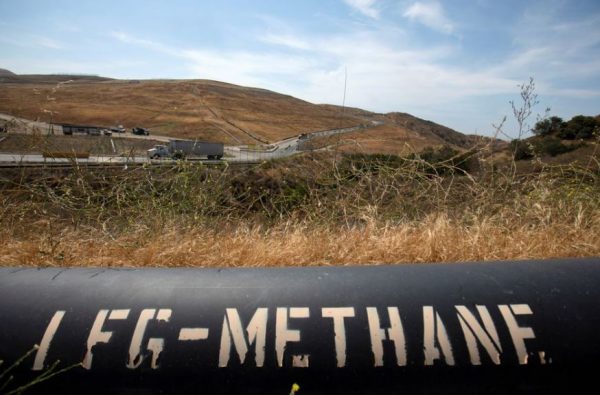
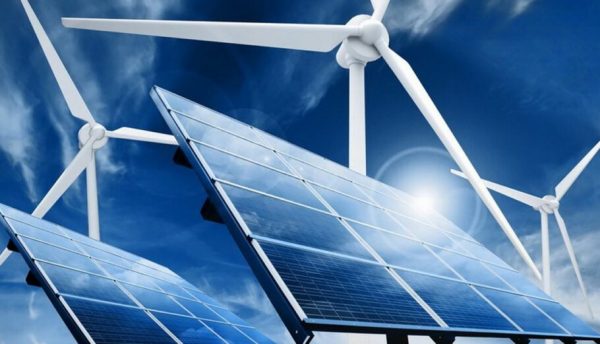
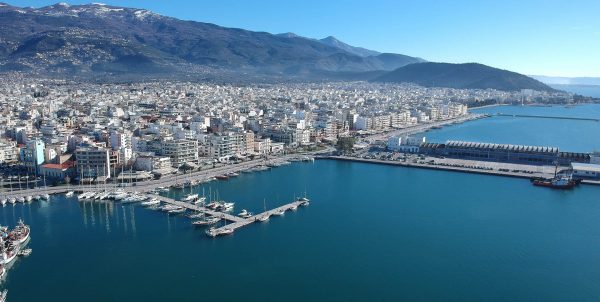


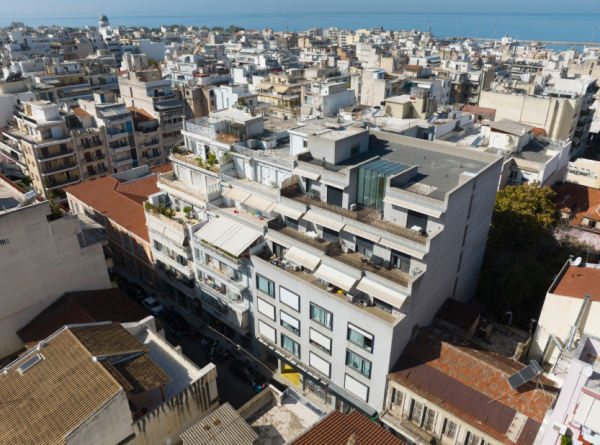
![Ξενοδοχεία: Μεγάλο το ενδιαφέρον για επενδύσεις στην Ελλάδα – Η θέση της Αθήνας [γραφήματα]](https://www.ot.gr/wp-content/uploads/2025/03/Athens-hotels-600x399.jpg)


 Αριθμός Πιστοποίησης
Αριθμός Πιστοποίησης